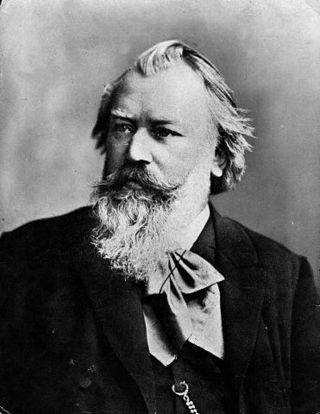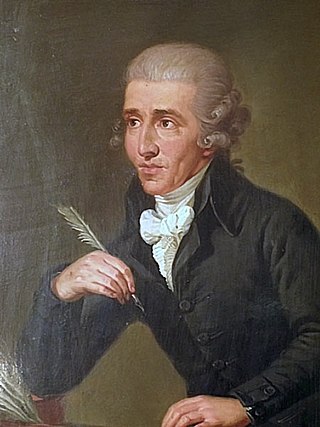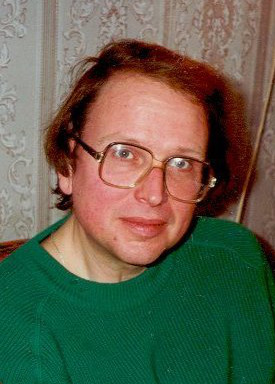Dmitri Shostakovich's String Quartet No. 8 in C minor, Op. 110, was written in three days.

The Symphony No. 15 in A major, Op. 141, composed between late 1970 and July 29, 1971, is the final symphony by Dmitri Shostakovich. It was his first purely instrumental and non-programmatic symphony since the Tenth from 1953. Shostakovich began to plan and sketch the Fifteenth in late 1970, with the intention of composing for himself a cheerful work to mark his 65th birthday the next year. After completing the sketch score in April 1971, he wrote the orchestral score in June while receiving medical treatment in the town of Kurgan. The symphony was completed the following month at his summer dacha in Repino. This was followed by a prolonged period of creative inactivity which did not end until the composition of the Fourteenth Quartet in 1973.
The Cello Concerto No. 1 in E-flat major, Op. 107, was composed in 1959 by Dmitri Shostakovich. Shostakovich wrote the work for his friend Mstislav Rostropovich, who committed it to memory in four days. He premiered it on October 4, 1959, at the Large Hall of the Leningrad Conservatory with the Leningrad Philharmonic Orchestra conducted by Yevgeny Mravinsky. The first recording was made in two days following the premiere by Rostropovich and the Moscow Philharmonic Orchestra conducted by Aleksandr Gauk.

Rodion Konstantinovich Shchedrin is a Soviet and Russian composer and pianist, winner of USSR State Prize (1972), the Lenin Prize (1984), and the State Prize of the Russian Federation (1992), and is a former member of the Inter-regional Deputies Group (1989–1991). He is also a citizen of Lithuania and Spain.

Edward Elgar's Cello Concerto in E minor, Op. 85, his last notable work, is a cornerstone of the solo cello repertoire. Elgar composed it in the aftermath of the First World War, when his music had already gone out of fashion with the concert-going public. In contrast with Elgar's earlier Violin Concerto, which is lyrical and passionate, the Cello Concerto is for the most part contemplative and elegiac.

The Double Concerto in A minor, Op. 102, by Johannes Brahms is a concerto for violin, cello and orchestra. The orchestra consists of 2 flutes, 2 oboes, 2 clarinets, 2 bassoons, 4 horns, 2 trumpets, timpani and strings.

Truls Olaf Otterbech Mørk is a Norwegian cellist.

David Geringas is a Lithuanian cellist and conductor who studied under Mstislav Rostropovich. In 1970 he won the gold medal at the International Tchaikovsky Competition. He also plays the baryton, a rare instrument associated with music of Joseph Haydn.

The Symphony No. 2 in E minor, Op. 27 by Russian composer Sergei Rachmaninoff was written from October 1906 to April 1907. The premiere was performed at the Mariinsky Theatre in Saint Petersburg on 26 January 1908, with the composer conducting. Its duration is approximately 60 minutes when performed uncut; cut performances can be as short as 35 minutes. The score is dedicated to Sergei Taneyev, a Russian composer, teacher, theorist, author, and pupil of Pyotr Ilyich Tchaikovsky. The piece remains one of the composer's most popular and best known compositions.

The Cello Concerto No. 1 in C major, Hob. VIIb/1, by Joseph Haydn was composed around 1761-65 for longtime friend Joseph Franz Weigl, then the principal cellist of Prince Nicolaus's Esterházy Orchestra.
Camille Saint-Saëns composed his Cello Concerto No. 1 in A minor, Op. 33, in 1872, when he was 37 years old. He wrote this work for the French cellist, viola da gamba player and instrument maker Auguste Tolbecque. Tolbecque was part of a distinguished family of musicians closely associated with the Société des Concerts du Conservatoire, France's leading concert society. The concerto was first performed on January 19, 1873, at the Paris Conservatoire concert with Tolbecque as soloist. This was considered a mark of Saint-Saëns' growing acceptance by the French musical establishment.

Piano Concerto No. 2 in F major, Op. 102, by Dmitri Shostakovich was composed in 1957 for the 19th birthday of his son Maxim, who premiered the piece during his graduation concert at the Moscow Conservatory. It contains many similar elements to Shostakovich's Concertino for Two Pianos: both works were written to be accessible for developing young pianists. It is an uncharacteristically cheerful piece, much more so than most of Shostakovich's works.
The Symphony for Cello and Orchestra or Cello Symphony, Op. 68, was written in 1963 by the British composer Benjamin Britten. He dedicated the work to Mstislav Rostropovich, who gave the work its premiere in Moscow with the composer and the Moscow Philharmonic Orchestra on 12 March 1964. The work's title reflects the music's more even balance between soloist and orchestra than in the traditional concerto format.
Saint-Saëns' Cello Concerto No. 2 in D minor, Op. 119, is written in two movements, like his Fourth Piano Concerto. It was composed in 1902 and is dedicated to the Dutch cellist, Joseph Hollman, who gave the first performance on February 5, 1905 in Paris. The Second Concerto is much more virtuosic than the First, but does not possess the thematic inventiveness and harmonic intricacy of the First.

Alexander Ivashkin, was a Russian cellist, writer, academic and conductor.

Rudolf Borisovich Barshai was a Soviet and Russian conductor and violist.
The Concerto Grosso No. 1 was the first of six concerti grossi by Soviet composer Alfred Schnittke. It was written in 1976–1977 at the request of Gidon Kremer and Tatiana Grindenko who were also the violin soloists at its premiere on 21 March 1977 in Leningrad together with Yuri Smirnov on keyboard instruments and the Leningrad Chamber Orchestra under Eri Klas. It is one of the best-known of Schnittke's polystylistic compositions and marked his break-through in the West.
The Cello Sonata, Op. 65, is a work by the English composer Benjamin Britten. It was premiered in July 1961 at the Aldeburgh Festival in Suffolk. The work is in five movements:
- Dialogo. Allegro
- Scherzo-Pizzicato. Allegretto
- Elegia. Lento
- Marcia. Energico
- Moto perpetuo. Presto

Tout un monde lointain... is a concertante work for cello and orchestra composed by Henri Dutilleux between 1967 and 1970 for Mstislav Rostropovich. It is considered one of the most important 20th-century additions to the cello repertoire and several major cellists have recorded it. Despite the fact that the score does not state that it is a cello concerto, Tout un monde lointain... has always been considered as such.

October, Op. 131, is a symphonic poem composed by Dmitri Shostakovich to commemorate the fiftieth anniversary of the October Revolution in 1967. He was spurred to compose the work after reencountering his score for the Vasilyev brothers' 1937 film Volochayev Days, reusing its "Partisan Song" in October. Although Shostakovich completed the work quickly, the process of writing it fatigued him physically because of his deteriorating motor functions.












